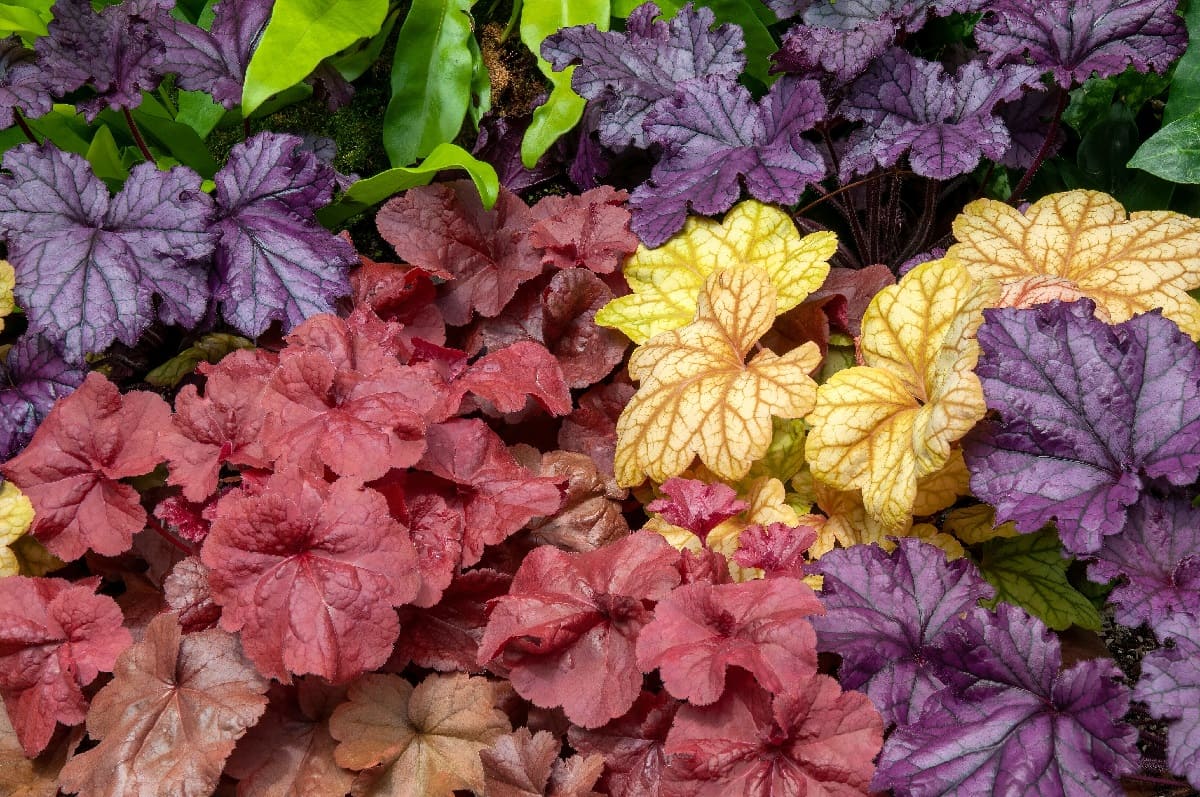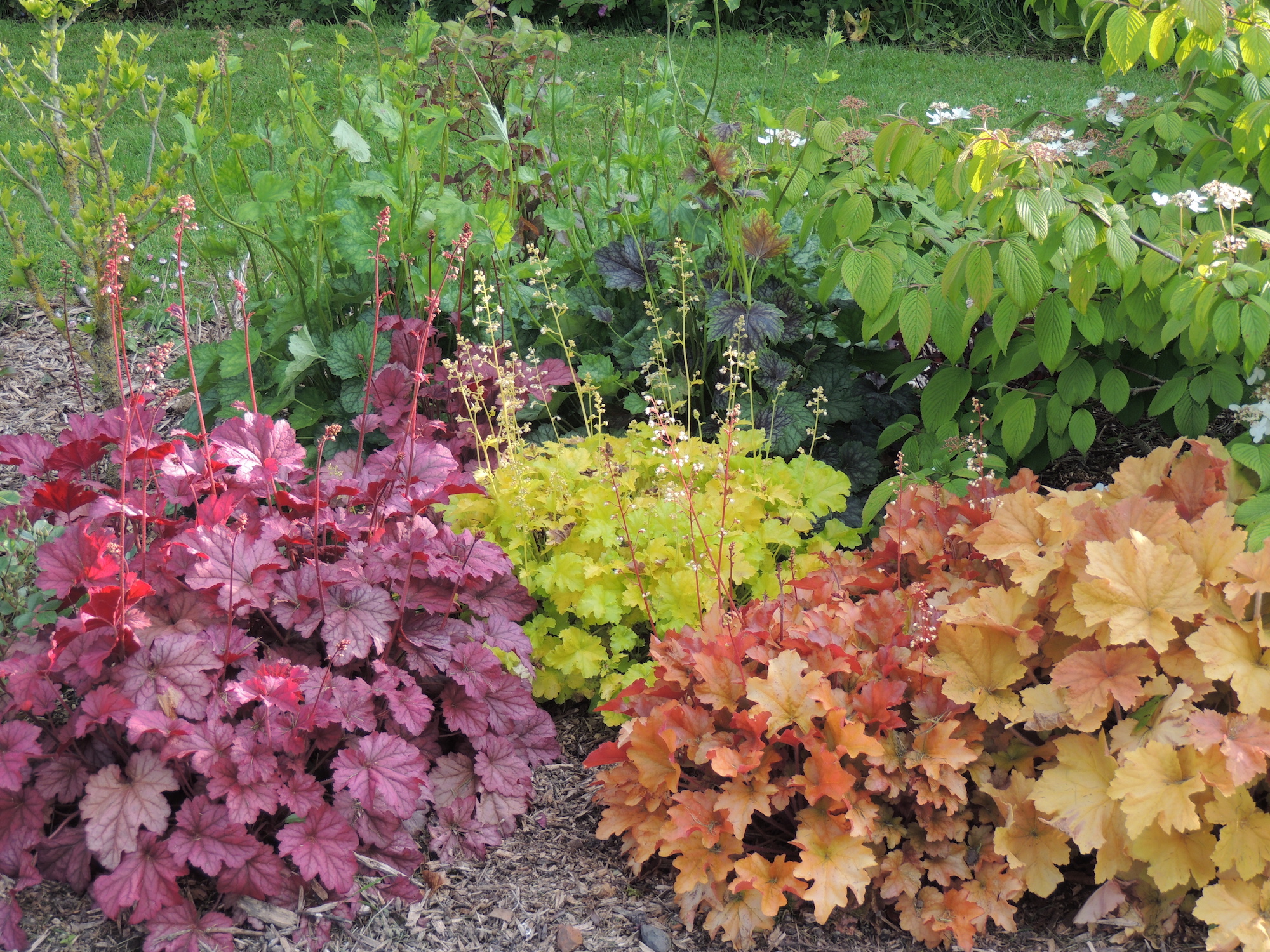
Caption
‘Paprika’ Coral Bells in the garden.
Photo Credit
Shutterstock
Subhead
Planting, Growing, and Caring for Coral Bell Foliage Plants
The Almanac Garden Planner - Use It Free for 7 Days!
Plan your 2025 garden with our award-winning Garden Planner.
Read Next
Varieties

Coral bells come in a wide variety of types and cultivators, each with unique colors, textures, and growth habits.
- ‘Black Pearl’ is more than a pirate ship. This purple-black leaved beauty sports ruffled leaves and dainty white flowers.
- ‘Green Spice’ is a shorter variety, typically reaching about 9 inches tall but spreading to 16 inches wide. Unique green and silver foliage with purple veination. It makes a unique ground cover or low border.
- ‘Lime Marmalade’ is a brightly colored, almost neon variety with frilly ruffled leaves, great for brightening darker areas that need some color.
- ‘Paprika’ has foliage that matches its namesake spice. Vividly orange, pair it with dark purple varieties to bring attention.
Gardening Products
ADVERTISEMENT
Comments
Add a Comment
Deer & rabbits may not like these, however, squirrels will dig them up when they are first planted & eat all the roots. They need protection, such as chicken wire for a year or two, the taller the better.













